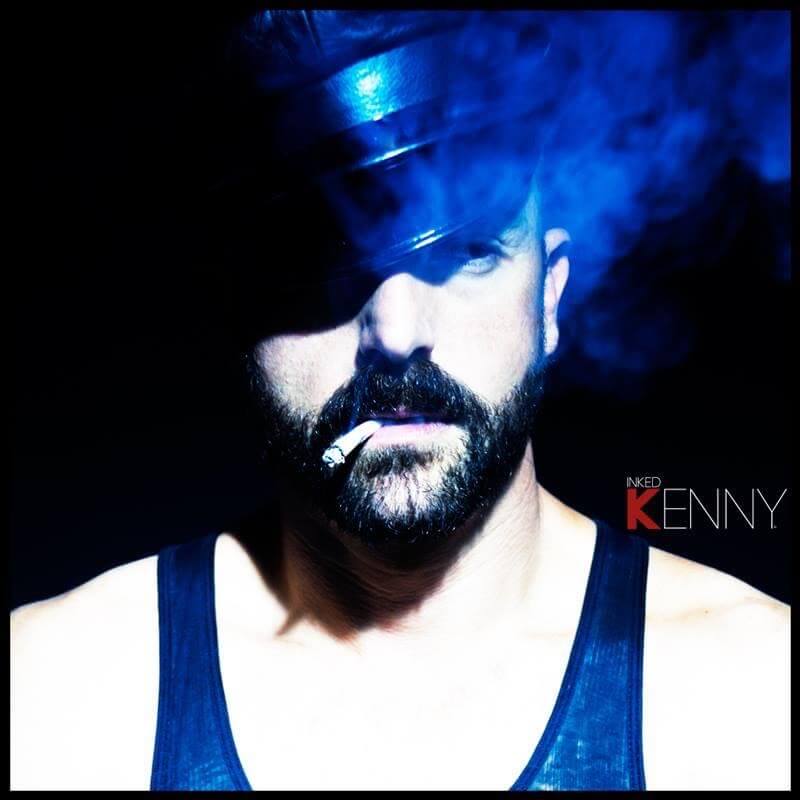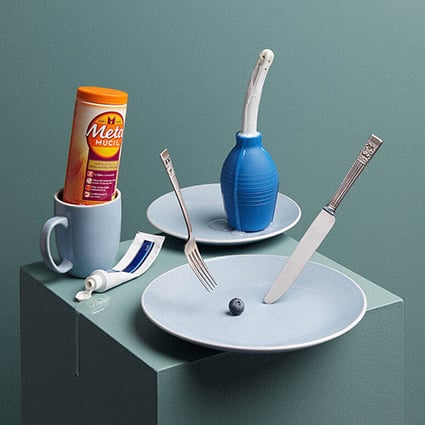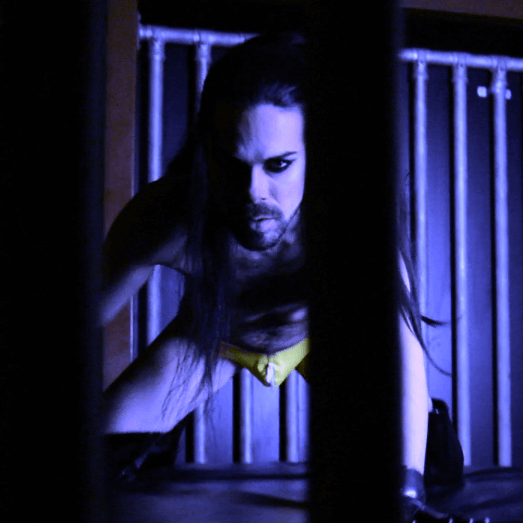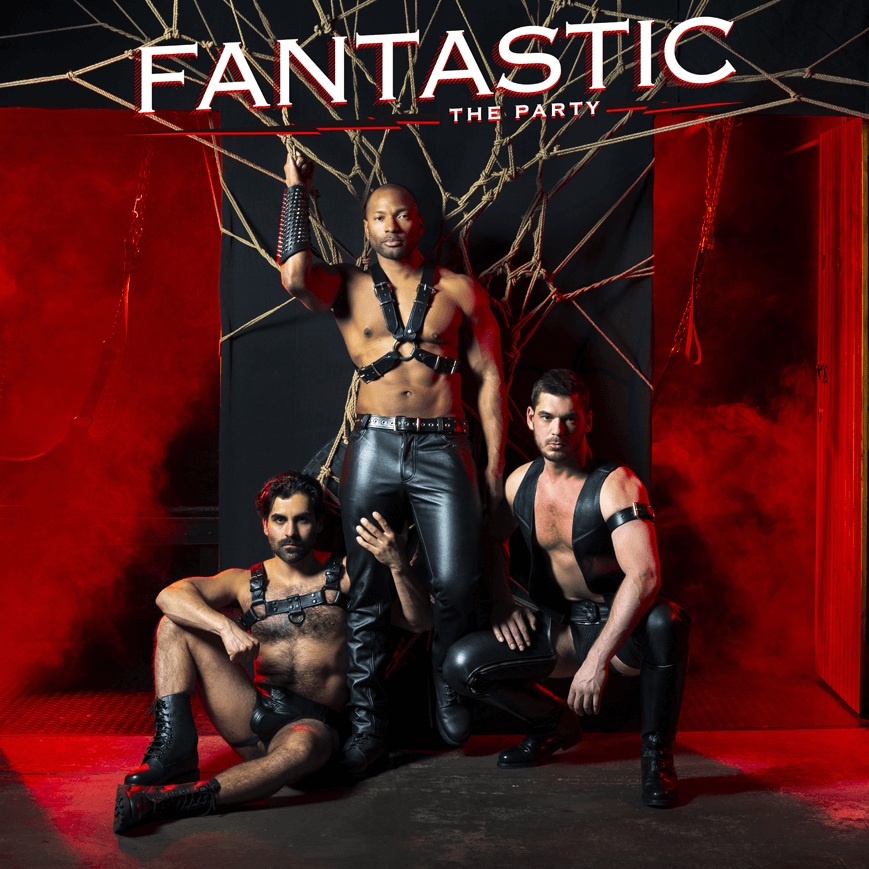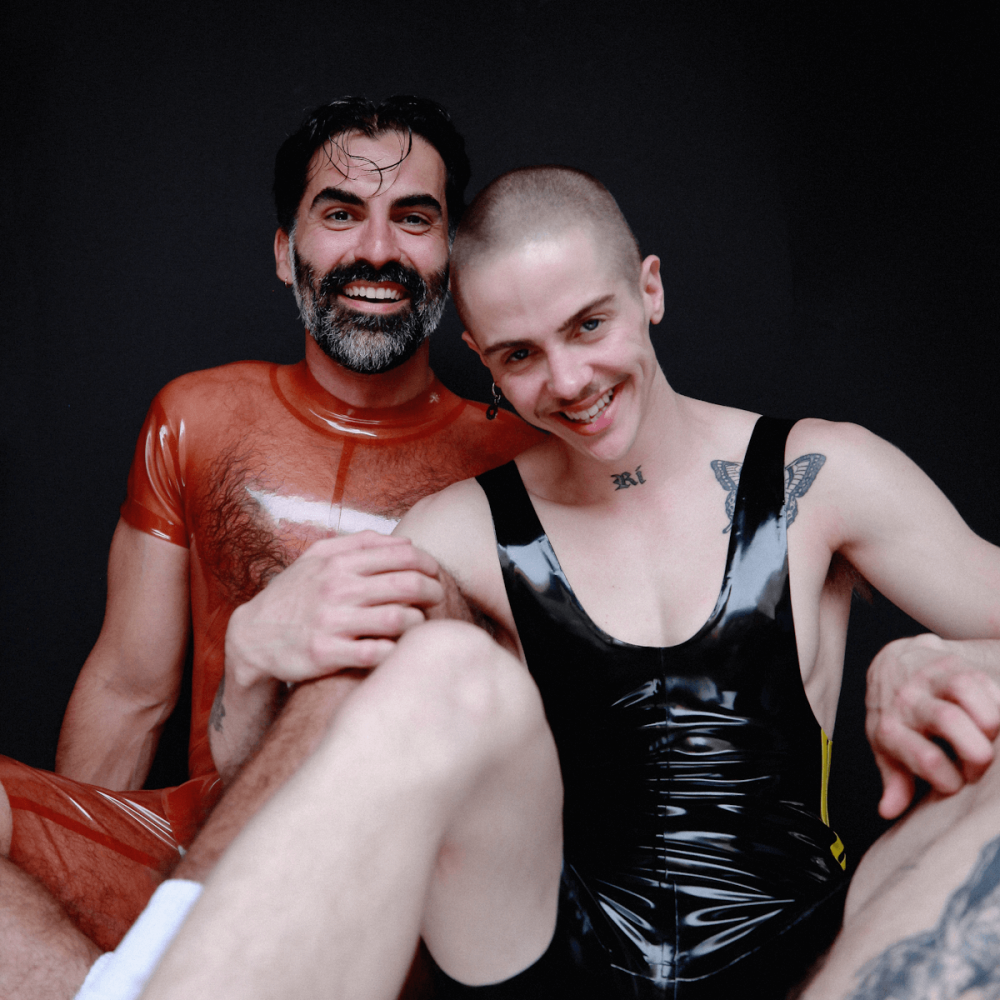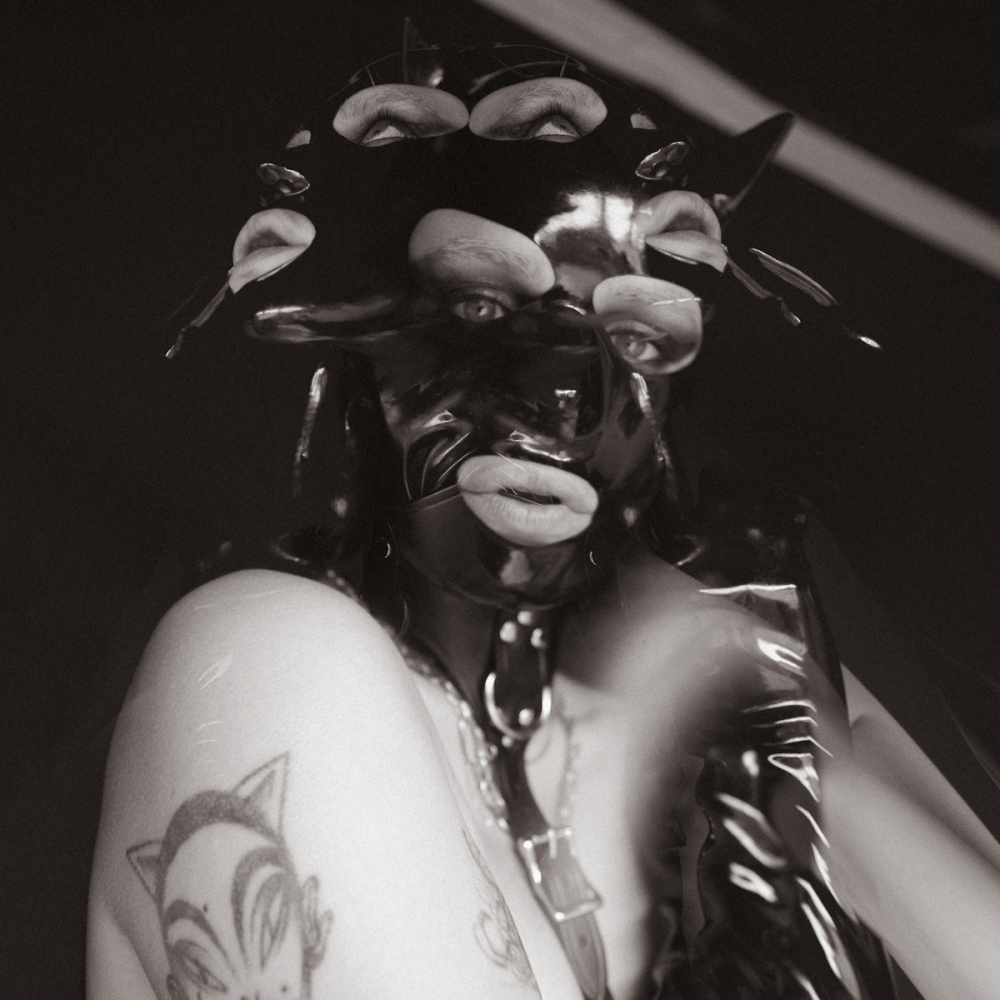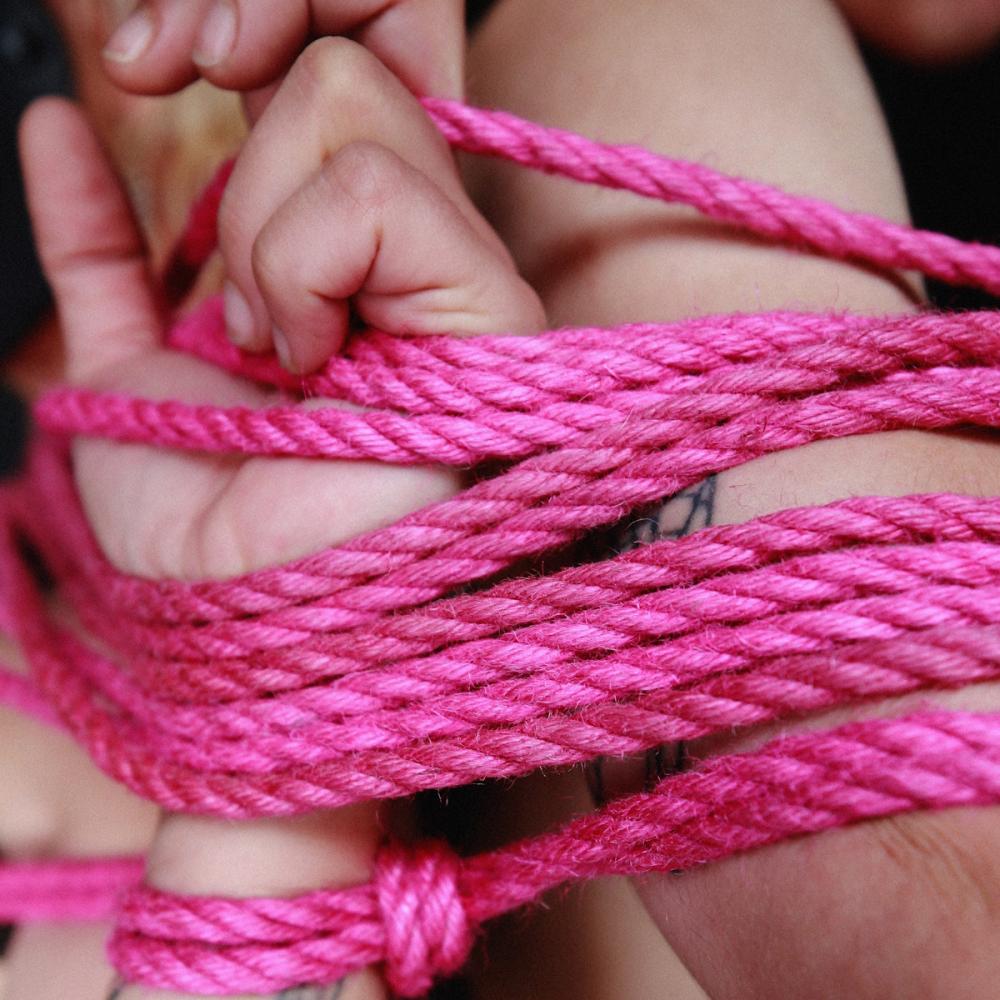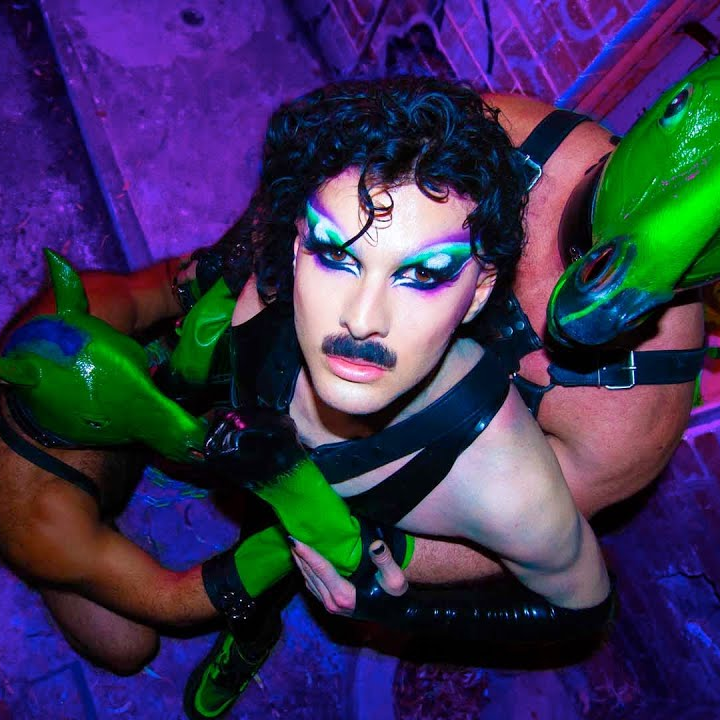Daydreaming of Dancefloors
- By Josh McKenzie
- 20 Nov 2021

I find myself daydreaming of dancefloors. I’ll be staring out the window, distracted from work by passing clouds, and a strobe-flash of colour and light blossoms in memory. For just a moment, it is real––I can hear the syncopated rhythms of a techno beat; can see hot men dancing on stage in neck-breaking high heels; can feel the embrace of rope arms stretch around me. But it is fleeting. The window is always there when I open my eyes again. Disappointingly. It makes me wonder, why do my memories of Naarm’s infamous queer parties flicker in the mind like acid flashbacks? What power do they possess to haunt in such a visceral way? In what follows, I attempt to answer these questions by drawing on cherished memories of being lost on some of my favourite queer dancefloors.

There is something special about a dark and smoke-filled nightclub. Rebellious, even. It’s like the rules don’t apply, or they stretch and bend as people reach for states of being that elevate above the ordinary. Through dance, communion or inebriation, it doesn’t matter the route taken; what matters are those collective moments where we transcend the individualistic confines of everyday existence and allow ourselves to be the communal beings we so often long to be. Descending a set of stairs into a basement club, it feels like each step you take, you leave behind a part of your constructed self only useful up there. You shake free of the shackles that restrain you moving through the ‘real’ world.
The sound of techno, intrinsically linked to queer culture, binds together some of the best queer parties in Naarm. To me, techno is deeply personal. Stripped and bare, the syncopated rhythms act like a framework through which you can express yourself. Look around any techno dancefloor, and you can see people picking up on different sounds, different percussion lines, different bass sequences, as if they are listening to completely different songs––finding intimate ways to articulate themselves in the moment through the union of sound and movement. This interpretative possibility is the power of techno and its importance to queer communities. There is a subversive potential, something defiant, that provides a point of connection on the dancefloor, as well as something uniquely contemplative. This attribute, the subversive potential––discovered at the intersection of techno and sex during a Berlin trip––inspired Nik from TROUGH to start his own techno gay-topia in Melbourne.

‘I started TROUGH back in 2005 out of sheer frustration with the music played in queer clubs and parties at that time. In Berlin, I attended an endless amount of queer dance parties that not only played the fiercest and hardest techno music but were parties packed full of a very diverse queer crowd I had never experienced before. All the party spaces were not set in traditional clubs or venues. They were all so unique and underground in the true meaning of the word.’ Nik from TROUGH.
On more than one occasion, working behind the bar at Wet, I have been asked to switch the music over to something a patron would like to listen to while they explore the plentiful delights of the sauna. You might think that the requests come thick and fast for the likes of Gaga, Kylie or even Shania, and you wouldn’t be wrong. But what you might not guess is the most common late-night music request: TROUGH music. Not techno, TROUGH music. Over the years, the party has cultivated a sound that is so synonymous with the event that it not only forms how some people view the techno genre as a whole, but also reverberates through the queer parties that have followed in its leather-boot-footsteps.
With some of Melbourne’s best techno DJ’s featuring on the bill, it is no wonder TROUGH has been able to develop a cult-like following with such a signature sound. Though, as incredible as the diverse array of artists are that often play the party, some of the most memorable moments are when you have no idea who it is providing the soundtrack. At TROUGH XIX, a night that was a little blurrier than most, as the crowd reached its peak, Alan Fitzpatrick’s remix of Hypercolours’ Blue & Green was worked into a set of unrelenting techno. The offbeat rim shot coupled with the distorted string wailing in the background, it transported everyone in the basement to another place––then the vocal dropped, and the mood of the dancefloor lifted; for just a few moments, everything else was forgotten, and all that was left was the beat and that voice. It was a flash of contemplation seamlessly threaded into the mass of pounding techno, moving bodies and sex.
‘What also blew my mind was that most of these parties were 100% sex-positive spaces. Everyone was free to get loose, have sex and dance to what I felt was the sexiest dance music. What I experienced was total freedom and gay-topia.’
The combination of hundreds of men dancing their hearts out––the desire you can tell is seeping from their pores with every drop of sweat, the occasional whiff of an impeccably clean harness that glimmers in the strobing lights (and in the eyes of those who wear them) or the sweet metallic stink of the smoke machine––it is the smell of TROUGH that always comes back to me in flashes of daydreamed memories. It is intoxicating. TROUGH’s sex-positive attitude allows patrons to leave behind the constraints of a heteronormative world and encourages everyone to reach inside themselves to uncover their true sexual potential. No matter their size, shape, or ethnicity, everyone is encouraged to get in touch with their own erotic nature. It is a liberating feeling to be set free in such a way and creates a truly unique dancefloor.
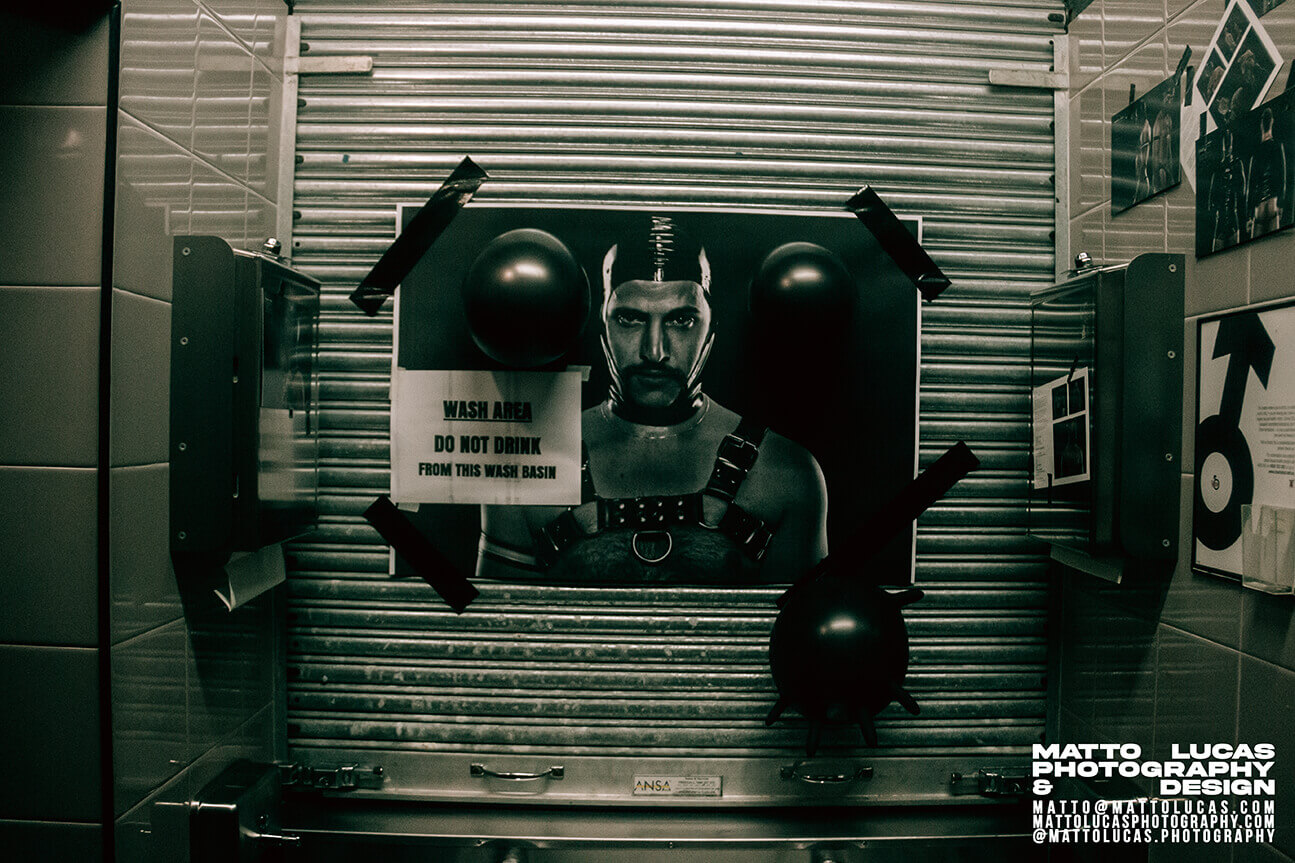
‘TROUGH was, and to a certain degree still is, primarily a gay space or a 'man-cave' where there is a strong leaning towards sex-positivity for homosexuals that want to feel comfortable expressing sexual flirtation or expression without inhibition; whether that’s on the dancefloor or in the dark corners of the space. The attitude of the night has more of a queer sensibility than a traditional gay circuit party vibe, and the branding of TROUGH embraces positivity, weirdness, individuality and the freedom and absurdity of sexual expression or kink. Through TROUGH, I have been fortunate enough to incorporate all of these creative outlets, disciplines and inspirations with the branding, decor and projected visuals of the events.’
I remember the first time I saw a flyer for TROUGH. Someone had left it lying around at Wet the week before the first party I attended. Not only was it incredibly hot, but it also intrigued me in a way that event advertising so often does not. Each artwork is themed with a specific aesthetic direction centred on the diversity of the male body whilst integrating it into spaces and scenarios that push what that means to its limits. Interestingly, it straddles an unusual position between the sexual, the alterative and the absurd and breaks free from the generic promotional offerings provided by the more familiar circuit parties that often circulate through the gay world. The artwork then forms the foundation upon which the décor for each event is built, and subsequently, the aesthetic vibe of the party. Flyers are stuck to the walls of the toilets, the stairwells, the hallways, pasted everywhere with hyper colour tape in makeshift ways that complement the old jockstraps and the seatbelt straps that dangle from the roof throughout Club 80––bringing gay-topia to life.
‘In general, though, I just hope a lot of the more progressive queer clubs/parties keep thriving, growing and continue to heavily influence the more mainstream gay/queer/and straight parties, which going by history has always slowly but inevitably happened.’
***
Nightclubs are more than the bricks and mortar that house them; they are the events that take over those physical spaces. Often the club is a mere skeleton, the base upon which something beautiful will be constructed, however temporary that may be. Queer parties exemplify this transformation of space because they hold at bay the rules that govern the normative world. This legacy is shown in the way events and clubs influence each other over time by finding fissures within a scene to push new concepts through. To create a space that pays homage to those who came before it whilst moulding it into something new. One thing that stands out at BARBA is the connection to the past, the nod to those who fought to carve out queer spaces and did the hard work to allow us to be able to be as free as we are today. Whether it is in the music selection, the fashion, or the performance, there is an awareness of the vital role queer people of colour played in the development of the queer clubbing world we are lucky enough to inhabit.
‘Dancefloors mean so much to the BARBA family because through them, we acknowledge our ancestors. Dancefloors have always been such an integral part of queer culture; Black & LatinX communities paved the way for queer club culture, so it is our honour to have the space that is Barba Party to carry the legacy of the legends before us and to continue to build dancefloors for future generations. At BARBA, we were trying to find a place that was able to hold a space for us, to find an environment where we could have fun, feel safe and comfortable. There were situations and places (even today) where we felt like outcasts. (The evident systemic racism ingrained in aspects of Australian culture was something we experienced too). That's why we began manifesting this 'new something' for us and other people like us.’
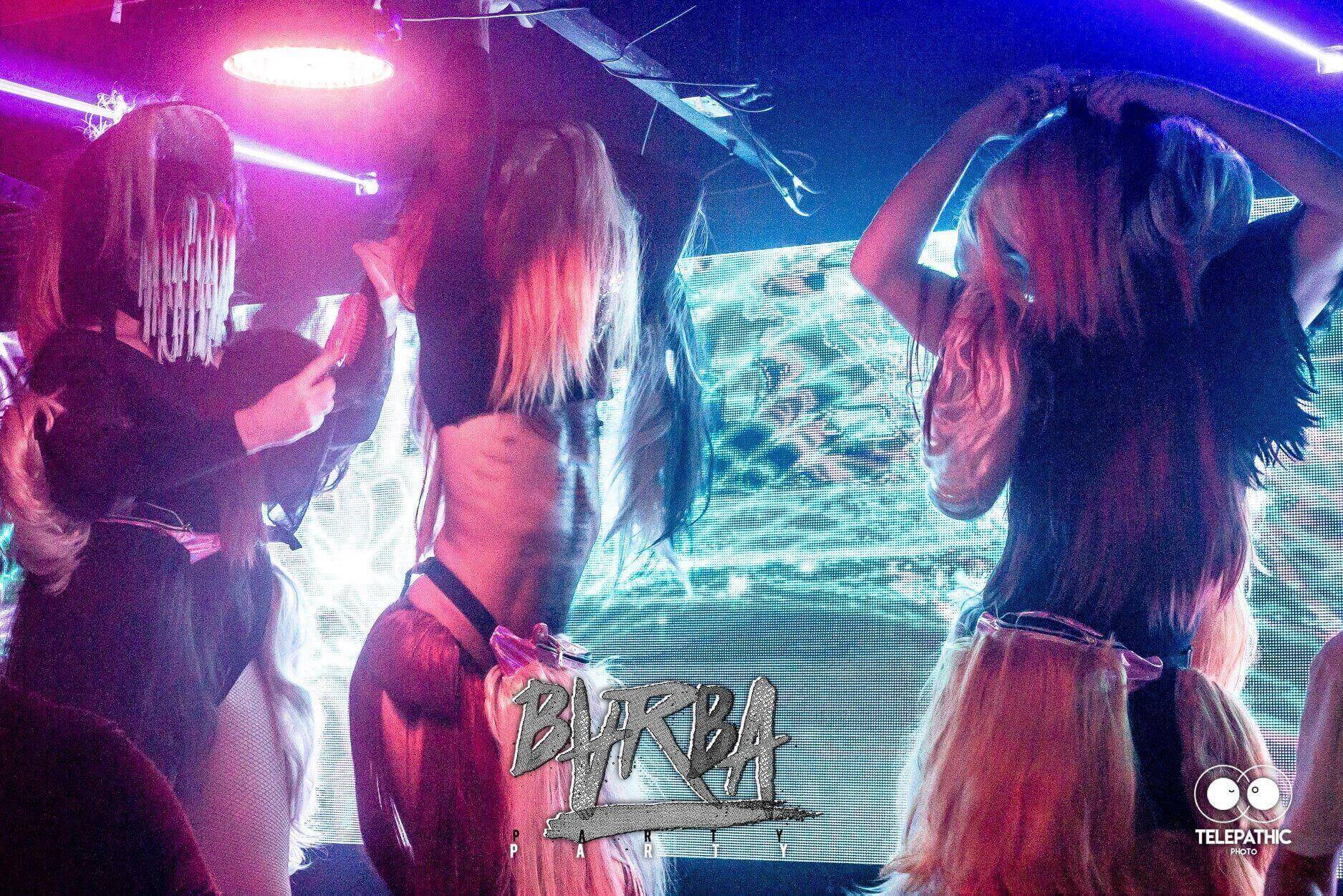
When so many spaces are not welcoming or even accepting of queer folk, especially queer people of colour , nightclubs and parties become such essential community spaces for people to feel accepted and loved. Queer parties have often been born of those marginalised creating spaces that move beyond the rules dominant in the gay/lesbian/straight world. That is the feeling that we are chasing when we seek out communal queer spaces; it is a breaking free that drives us––breaking free from the heteronormative constraints placed upon us in our everyday lives, breaking free from the trans/homo/biphobia that follows us around, or breaking free from the racialised structures of oppression faced by queer people of colour. This last kind of breaking free is one of the driving forces behind the creation of BARBA.
‘At BARBA, no matter who you are, what age you are, whatever your gender identity, we want to celebrate each other, celebrate every shape and colour. We want everyone to be able to break free, heal, and enjoy experiences and moments that didn't exist in our countries of origin or in our teenage years, where we couldn’t live our queerness to the fullest. We wanted some great techno, a sex-positive attitude, focus on queer men but open to all sexualities and spectrums of gender. We wanted to evoke a special and unique space, not just another nightclub but a world/experience where all are welcomed, embraced, and respected.’
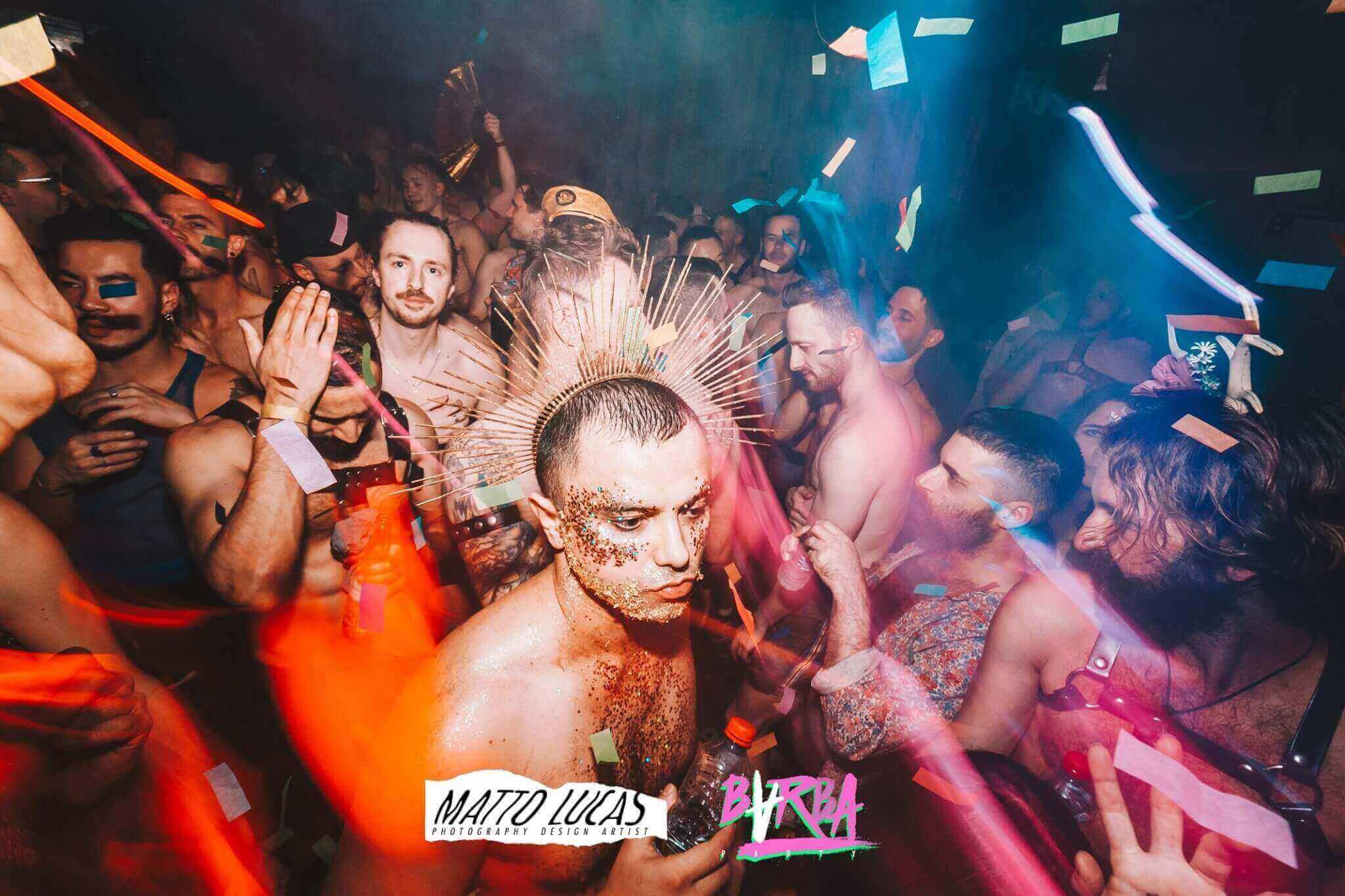
Performance art is the cornerstone of a BARBA party. It is the vehicle through which those present can rise above the conventional and transform into something wholly different. The immersive experiences provide spectacle moments where you are taken out of real-life and transported to some other world of queer delight. At the Sub Club residency, I remember grooving away while Dandrogyny, Pancetta Love and Zelda Moon danced on stage for what felt like hours, in outfits made entirely of wigs. The way the hair danced around their waists as they moved in time with the music, the way they flipped open fans which could be heard over the beat, the way they playfully brushed the wigs that covered them, all of it bordered on the absurd in the best kind of way.
Even the approach to go-go dancers is different. Wearing neck-breaking heels with Little Miss Muffet masks, dancers seductively saunter across the elevated stage in the basement club; not only there for visual pleasure, which they most certainly are in tiny thongs and bulging muscles, but also there to engage with the crowd, flirt with those in the front row trying to get a closer look. This is brought together by the little touches that bring a feeling of authenticity to the performance––like the Adidas bumbag strapped over the chest or the tiny spoon dangling from a chain around the neck––each detail elevates above objectification to a kind of sexual spectacle both exciting and artistic.
‘We strongly believe that when you are on a dancefloor, we are all equal––we feel free, connected and surrounded by people like us, with similar stories and interests, but also so different. It's like an ecosystem where all these magical creatures coexist; at the same time, we all wanna exorcise our demons and disconnect from the outside world.’

Often, the music brings moments of connectedness that transcend the boundaries of the outside world. Always a treat at a BARBA party, it’s the range of different sounds that is a point of difference––you might here some hard techno, a lot of acid, some new wave or disco––you never know what you’re going to get. Late one morning, at the Sub Club, on another blurry night, the classic Passion by Gat Décor was dropped, a house/progressive/techno track from the early nineties that refuses to be bound by the confines of time and genre. When the piano lead soared from the speakers, the dancefloor transformed into a pulsating mess of ecstatic bodies lost in a sea of magic. If you closed your eyes, you were transported back to the early days of acid house parties, at infamous haunts like Shoom or The Hacienda. It’s moments like these that are burned into the minds of partygoers, experiences that allow you to exorcise your demons and disconnect from the worries up there.
***
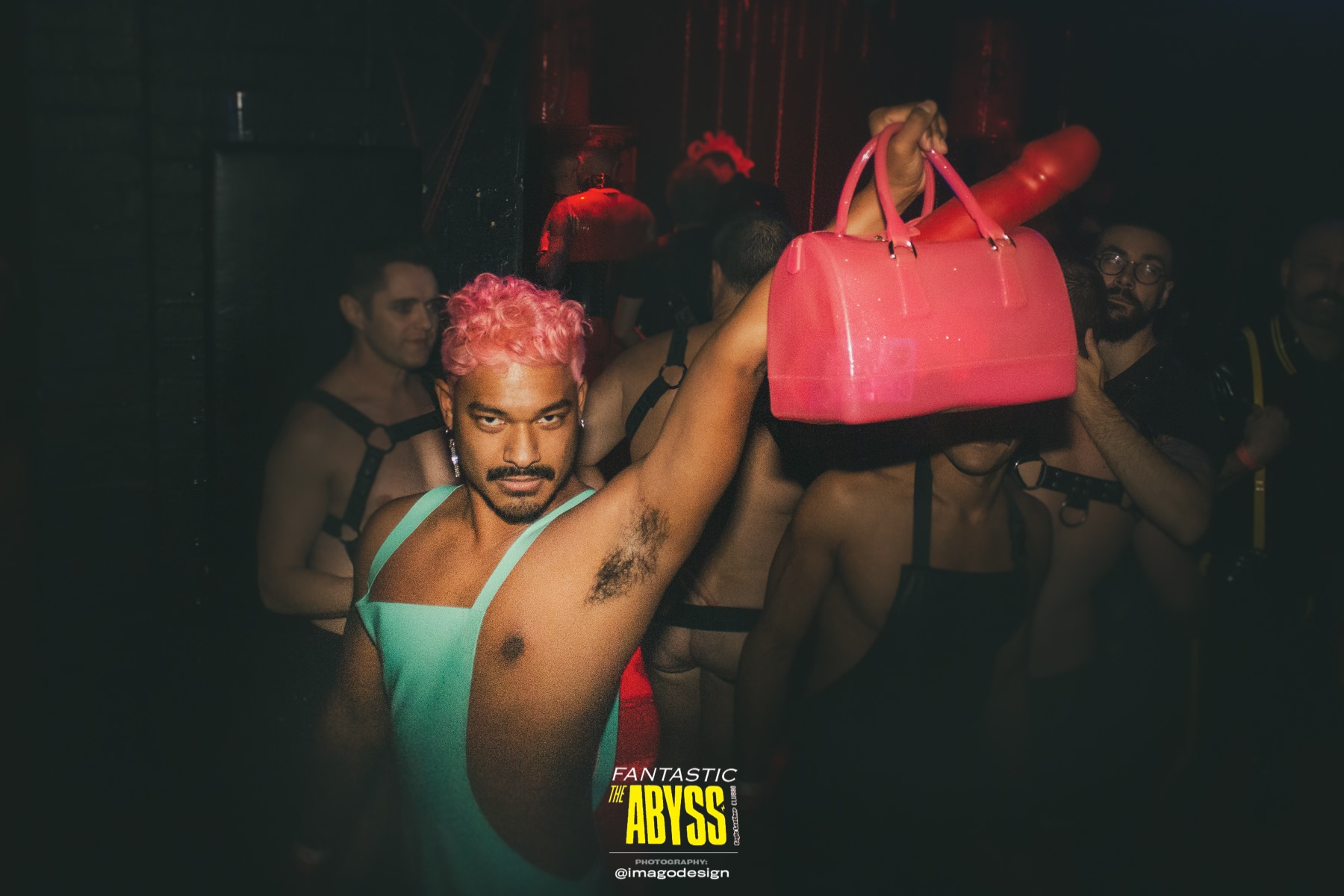
The most exciting events start building in partygoers' minds in the days and weeks before they are due to take place. The thrill of anticipation pushes the worries of everyday life aside, breaking up the monotony of the working week with smiles of expectation. Anything could happen. It could be the best night of your life. One of my favourite parts of a FANTASTIC event is that you have to head into Eagle Leather, the folks behind the awesome party, to pick up your tickets before the night, and if you’re lucky––a new outfit. I usually leave this task until the last couple of days before the party. Pushing through the doors and into the store, it feels like all the anticipation reaches a climax; you know then that Fantastic has nearly arrived––the hard copy tickets in your hands become your most cherished possession, one that you will add to other party-memorabilia that fills your bottom drawer at home.
‘I have always wanted to be involved with an event that encouraged the lines between genders and sexualities to become more fluid and dynamic both in action and thought, as opposed to what we generally see in everyday society. A place where everyone would be equal and their individuality would be embraced by all. I guess we wanted to create the perfect world even if it were for one night.’ BJ from Fantastic.
There is something rebellious about a party that openly encourages the breakdown of the constructed walls that separate gender and sexuality. Even more so when the boundaries of sex and pleasure are also pushed against, where the very idea of what constitutes normal is rendered inconsequential or irrelevant. By throwing an all gender/all sexualities party in the basement of Club 80, such a well-established male-only venue, it always felt defiant, especially the night when the upstairs playrooms were open to all. Part of what conjures this feeling is the transformation of the space for a Fantastic event. It is so complete that you have trouble remembering what Club 80 looked like before the moment you step through the door and into the constructed fantasy world of the Eagle Leather Crew. After offloading layers of ‘normal’ clothes (worn over latex and sportswear for the journey into the party), you hand your ticket to a rubber queen at the entrance to Club 80, walk past a small bar on your right, the lighting desk on your left, and into the outstretched arms of rope tied intricately from the rafters––bound from the stage right back to the entrance. As you follow the woven installation up the front, the shibari work culminates in a suspended circle of rope that acts as a looking glass to the stage, like you are somehow on the other side of a mirror, in a place where the normal rules don’t apply, where people are allowed to be their true selves in ways they are often denied––walking through the doors then, it felt like I had entered a perfect queer wonderland.
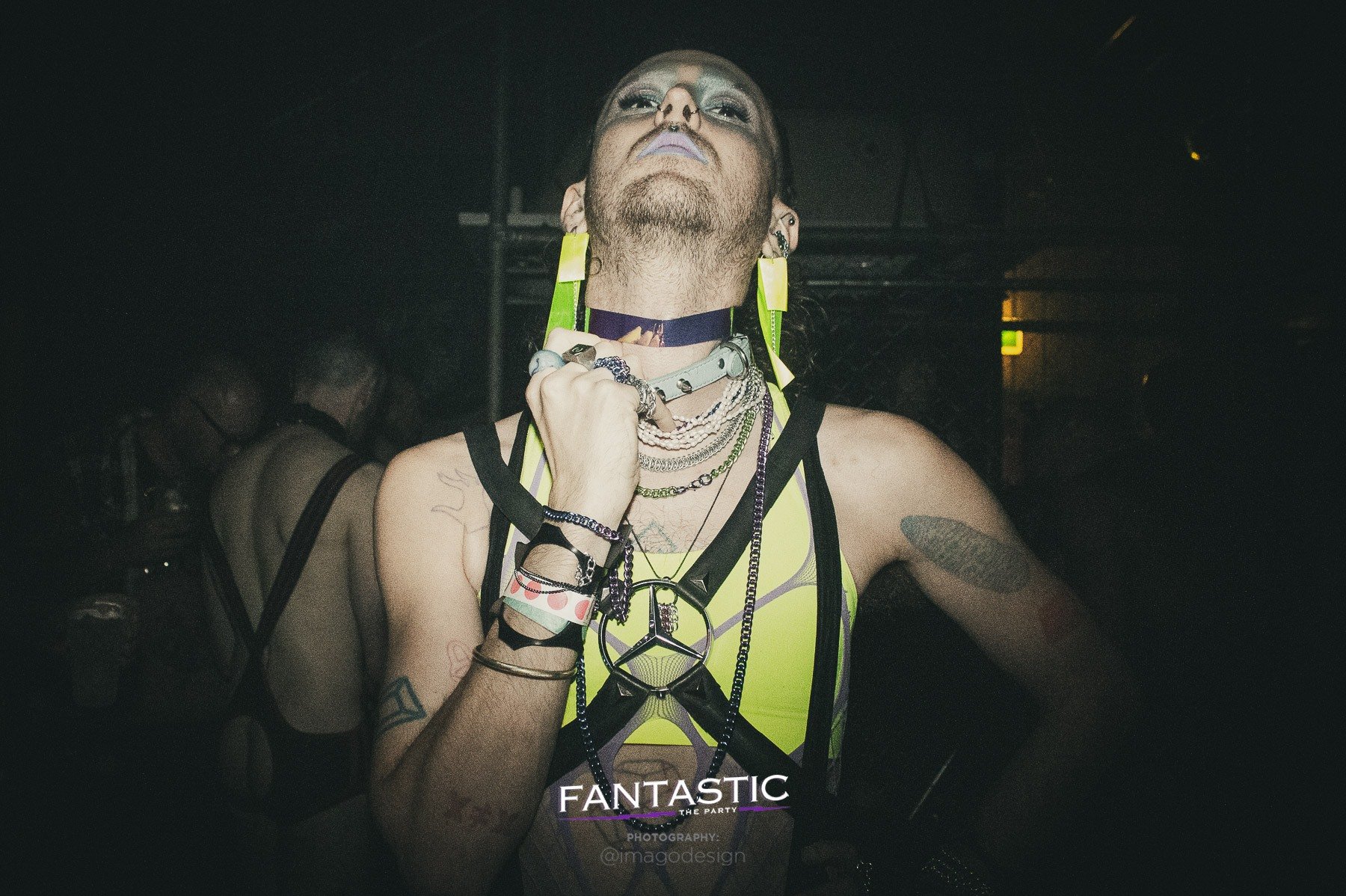 ‘Being different is beautiful, and when you surround yourself with accepting people from different backgrounds but with the same values and vision, you feel supported, and your differences are celebrated. A night out at a queer event can leave you energised and feeling more positive about the world around you.’
‘Being different is beautiful, and when you surround yourself with accepting people from different backgrounds but with the same values and vision, you feel supported, and your differences are celebrated. A night out at a queer event can leave you energised and feeling more positive about the world around you.’
Heteronormativity is not only tied up in traditional expressions of gender and sexuality; it is also intrinsically intertwined with Christian ideals of sex and its function within Western nation-states. Even to this day, we are led to believe that sex is to be merely procreative, to be shared by those that are cis-gendered, straight and married, and even then, it is not something that you should enjoy too much. These culturally inscribed understandings of what acceptable sex is weigh down on us in insidious ways that we are not often aware of until we enter into a place where the oppressive forces of a conservatively dominated world do not reach. At Fantastic, people float past in gas masks, dance all night hooded in latex, pups crawl across the floor, harnessed men grind against each other, and so much more. What I am struck by when I view these sights is a feeling of total freedom. I am inspired by those challenging what they are told is OK. What is acceptable sex. This feeling is solidified in my mind in daydreamed flashes because what always comes back to me is the people. Every last one of them at a Fantastic event are the kindest, warmest, consent focussed, and gentle people. It is a place where you are always made to feel safe; like you are a part of a family, a special kind of chosen family that those on the outside, those on the other side of that looking glass, don’t ever get to experience. And that is special. If only for one night, it really is a perfect queer wonderland.
‘We were keen to highlight Australia’s amazing collection of local talented artists, and we also saw the importance of bringing over international acts. The mix of Australian and overseas artists creates a rare atmosphere where attendees become completely immersed in and intoxicated by the experience they are sharing with the rest of the attendees - they look around and then they notice other people too are smiling, or surprised, or shocked - and either way the mood in the room shifts, people feel more ‘together’ with this communal experience, and the smiles around the room suddenly makes strangers more approachable - “did you see that?!”. People who might not have interacted previously now realise their shared joys, and what they have in common rather than what divides them or makes them different to each other.’
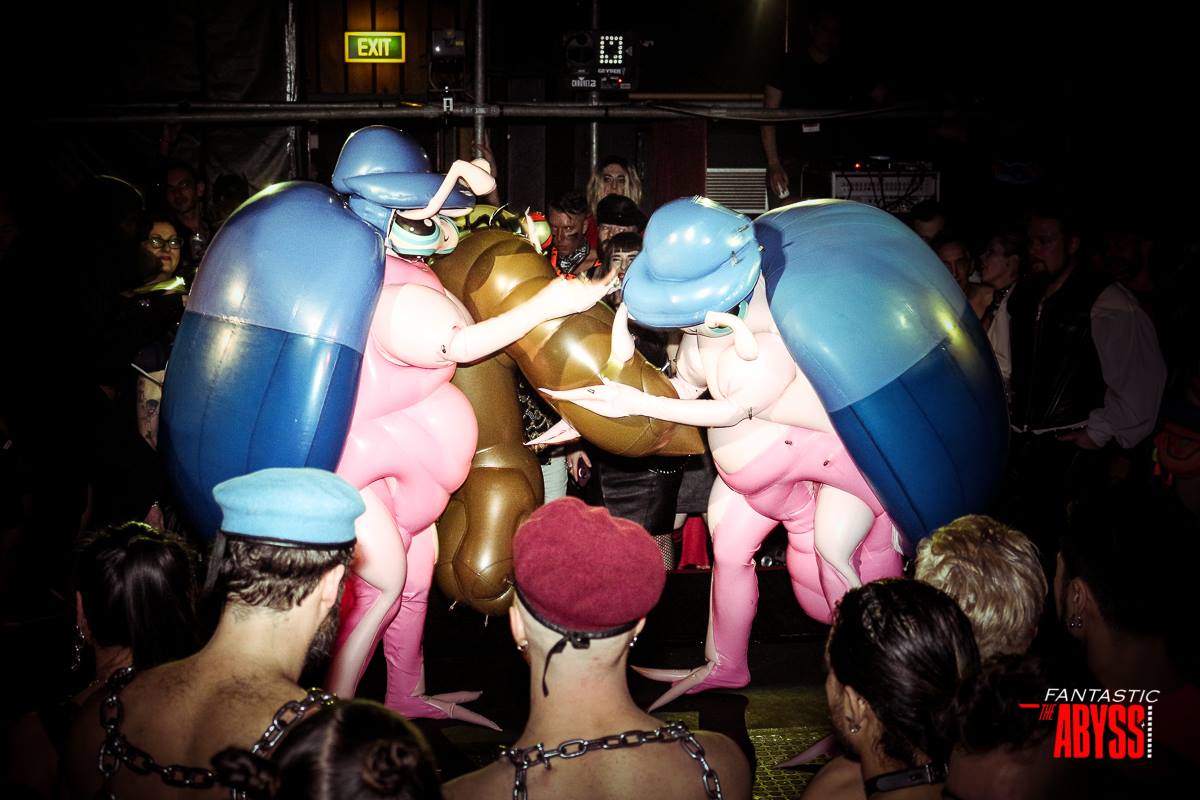
Spectacle is everywhere at Fantastic. Whether it is a latex pig giving birth on stage, the intimate workings of a shibari performance, or two Darlek looking creatures dancing the night away, incredible performance art weaves through the night seamlessly providing a veritable feast for the senses. One night, I’m not sure what party it was exactly, but I had to go and get a beer for a friend. I left the dancefloor and entered the side room with the bar. Before I could make my way through the crowd, a performance stopped me in my tracks. A gorgeous woman sat atop a stool against the far wall, grasping the seat beneath her. A large, tattooed man, in a thick latex apron, prepared to place a medical needle through her forehead. It was the last in a row that arched across her brow like a hypodermic crown. As the needle pierced the top layer of skin, her legs shook, and her knuckles went white as they clutched the seat a little harder. Clear watery liquid slowly dripped from one of the needles down toward her eye. The black-gloved man pulled a square of paper towel from a suitcase beside him and wiped away the liquid, clearing her eye without smudging her makeup. Tenderly. I was transfixed, unable to move for the remaining twenty minutes of the performance. It was not until some random acid track was played that I was broken from the spell and made my way back to the dancefloor––without the drink.
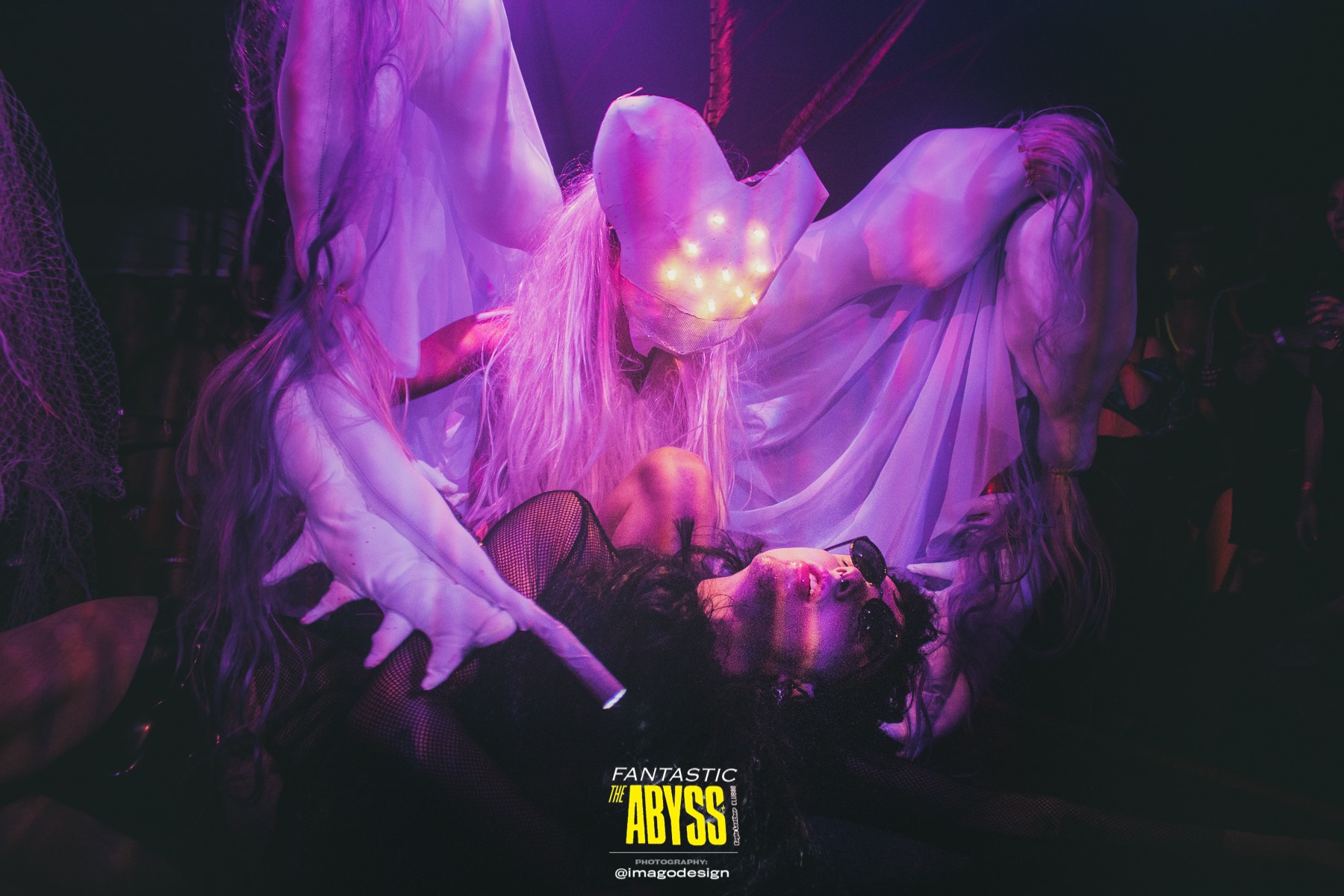
Whether it is DJ Hell or Boris or Adrian Bell or Xanthrax, it’s often difficult to leave the dancefloor to explore the other pleasures that Fantastic offers. The music is just too good. One moment that stands out for me was Simona’s closing set at one of the parties a few years back. Bringing a signature sound of techno blended with EBM and new wave, it’s the perfect way to spend the last hours of Fantastic, which always seem to come around too quickly when there is still so much fun to be had. On this night, the house lights had come up slightly, but the crowd was begging for one last track, not ready to cross over to the other side of the looking-glass just yet. Simona smiled in a way that suggested she had just the perfect track. And she did. Master and Servant by Depeche Mode blared from the speakers and the dancefloor erupted. In that daydreamed moment, I get goosebumps.
‘It is normally towards the end of the night when I look over a dancefloor that I am really inspired and excited. I just love watching people from all different backgrounds coming together, some dancing on various platforms, others close to each other, some in groups, but all moving as one in a happy trance-like state. When you step back and witness that for a moment, it feels as though it is all part of some kind of rebellious movement we are involved in which I find really inspiring.’
I find myself daydreaming of dancefloors. The rebellious acts of community. The transgressive potential of performance art. The truly unifying power of techno music. It is the cherished memories of these moments that fill me with hope for a very queer future soon to come.
Trough X images courtesy of Matto Lucas.
BARBA images courtesy of Matto Lucas and Telepathic Creative.
FANTASTIC images courtesy of IMAGO Design and Dean Arcuri.

